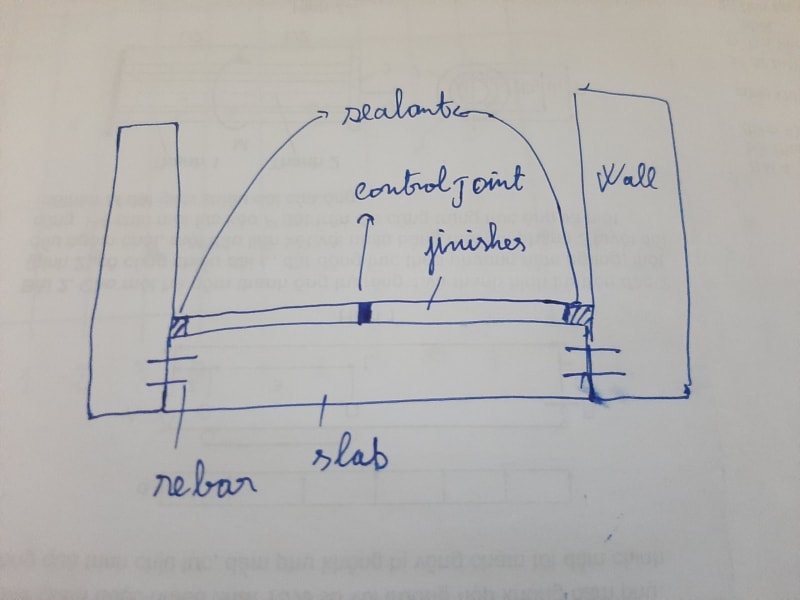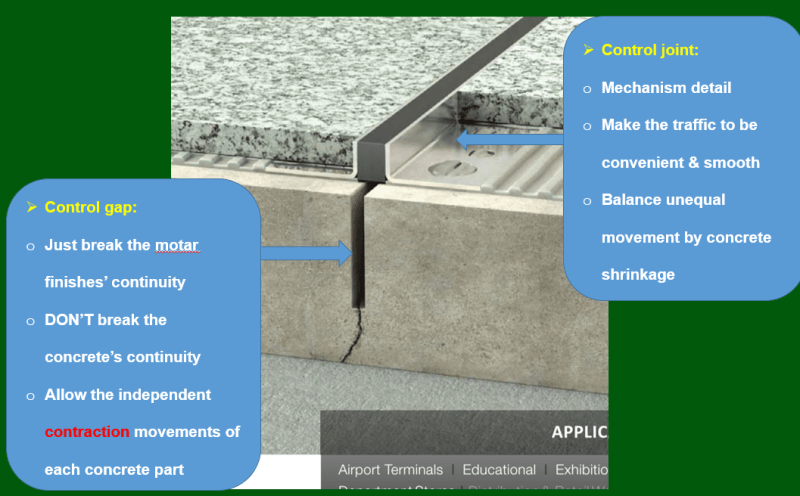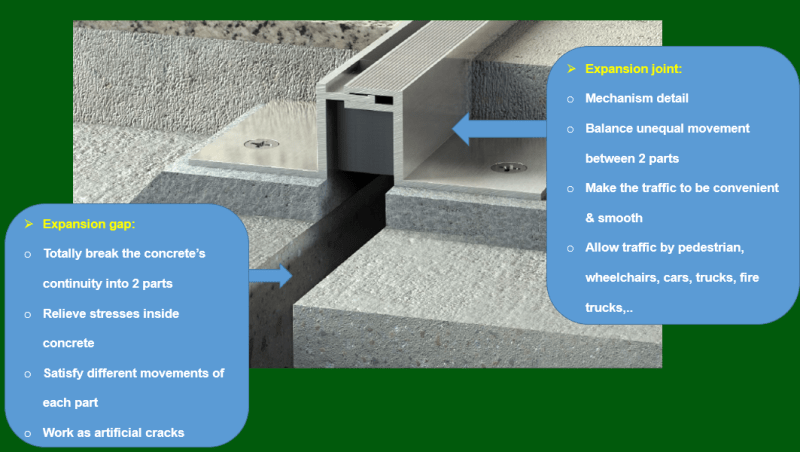Phuong Pham
Structural
- Aug 24, 2020
- 3
Hello my colleagues,
It's a big joy for me to join an international forum like this one. I know there are so many masters joining this forum also.
I'm a Vietnamese guy. highways and bridges engineering. I'm working as a sales engineer, selling solutions for control joint and expansion joint.
I have 2 points that I hope could have your advice:
1. About terminology.
I'm chasing a project for control joint. Because the detail with metal plates & rubber infill was too expansive. I decided to offer my customer:
1.1. For control gaps at the foot of the wall: using sealant because of low traffic frequency

1.2. For control gaps inside the floor: using metal-plate-infill-rubber detail, because of high traffic frequency

Using this choice, I could decrease the quantity of expansive unit price materials. So how should I call these 2 concepts in English? Does wall foot control gap make sense for type 1.1?
2. About designing process:
How do you design the expansion gap? I know it's easy in Western country but this is brand-new in Vietnam. If I wanna sell this, I have to show the consultant how to use it. I'm now spun around by standards. Could you please send me an example for design the expansion gap and the control gap? I mean If we have the required gap width and required movement of the gap, it's really easy to pick the joint by catalogs from manufacture. But how to build the requirements for the gaps, in order to chose the joint
Please teach me how to do that.
It's a big joy for me to join an international forum like this one. I know there are so many masters joining this forum also.
I'm a Vietnamese guy. highways and bridges engineering. I'm working as a sales engineer, selling solutions for control joint and expansion joint.
I have 2 points that I hope could have your advice:
1. About terminology.
I'm chasing a project for control joint. Because the detail with metal plates & rubber infill was too expansive. I decided to offer my customer:
1.1. For control gaps at the foot of the wall: using sealant because of low traffic frequency

1.2. For control gaps inside the floor: using metal-plate-infill-rubber detail, because of high traffic frequency

Using this choice, I could decrease the quantity of expansive unit price materials. So how should I call these 2 concepts in English? Does wall foot control gap make sense for type 1.1?
2. About designing process:
How do you design the expansion gap? I know it's easy in Western country but this is brand-new in Vietnam. If I wanna sell this, I have to show the consultant how to use it. I'm now spun around by standards. Could you please send me an example for design the expansion gap and the control gap? I mean If we have the required gap width and required movement of the gap, it's really easy to pick the joint by catalogs from manufacture. But how to build the requirements for the gaps, in order to chose the joint
Please teach me how to do that.


